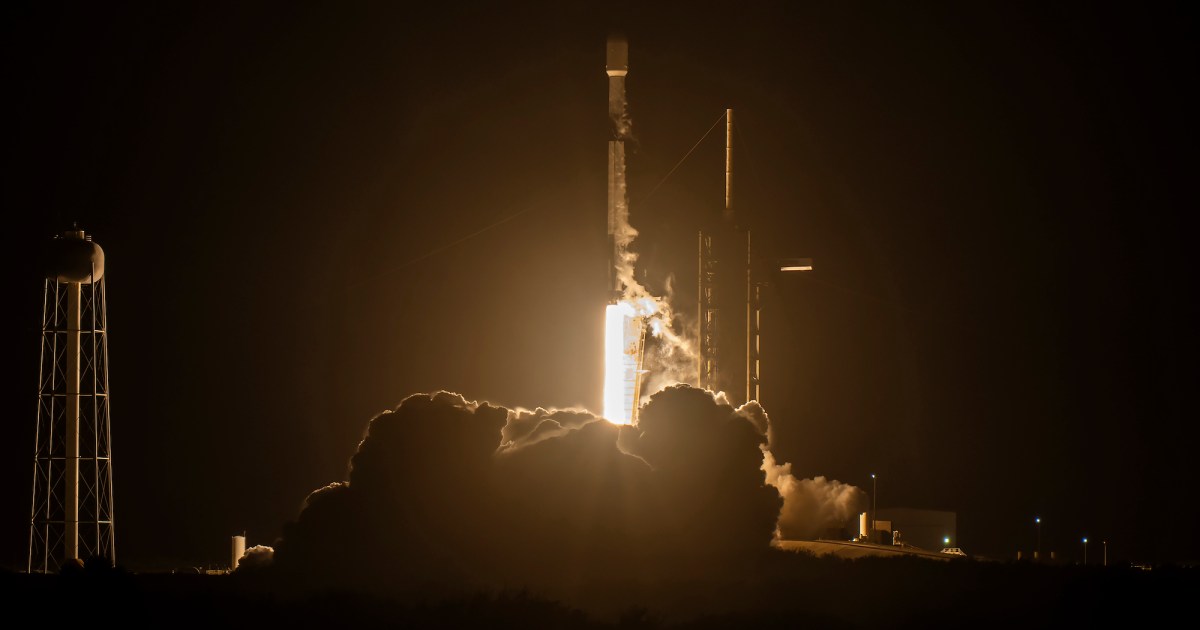A SpaceX Falcon 9 rocket took its 24th flight on Wednesday, a record for the first-stage booster.
Lifting off from the Kennedy Space Center in Florida at 5:13 a.m. ET, SpaceX’s Falcon 9 rocket launched 24 Starlink satellites to low-Earth orbit. About eight minutes after launch, the rocket’s first stage performed a flawless landing on a drone ship waiting off the coast of Florida, paving the way for a 25th flight once it’s been checked over and refurbished.
Previous flights for the booster, listed by SpaceX as B1067, involved the CRS-22, CRS-25, Crew 3, Crew 4, TelkomSat-113BT, Turksat-5B, Koreasat-6A, Eutelsat HOTBIRD-F2, Galileo L13, mPOWER-A, and PSN MFS missions, along with 13 Starlink mission deploying internet satellites to low-Earth orbit. Before Wednesday’s record-breaking flight, B1067 last launched on November 11, while its first flight took place in June 2021.
Two other first-stage Falcon 9 boosters have taken 23 flights to date, while many others have also taken multiple flights, so B1067 now leads the pack.
Reusing the rockets in this way allows SpaceX to cut the cost of space missions and operate launches more frequently, a setup that makes orbital missions affordable for a greater number of companies and organizations than before.
SpaceX first achieved an upright landing of a 41.2-meter-tall Falcon 9 first-stage booster in 2015, and following a few mishaps during subsequent landing attempts, it soon managed to perfect the procedure.
SpaceX engineers are now eyeing a much bigger challenge — bringing home the considerably larger Super Heavy booster, which forms the first stage of the Starship rocket. At 71 meters tall, it’s much harder to land on the ground, so the company added giant mechanical “chopstick” arms to the launch tower that secure the booster as it returns to base, just before the vehicle touches the ground.
SpaceX achieved the feat in spectacular fashion on its first attempt during the rocket’s fifth test flight in October, but it was unable to repeat the maneuver on its sixth test last month. Still, with more practice, SpaceX is expected to perfect the landing of the Super Heavy as it prepares the rocket for launches toward the moon, Mars, and beyond.


